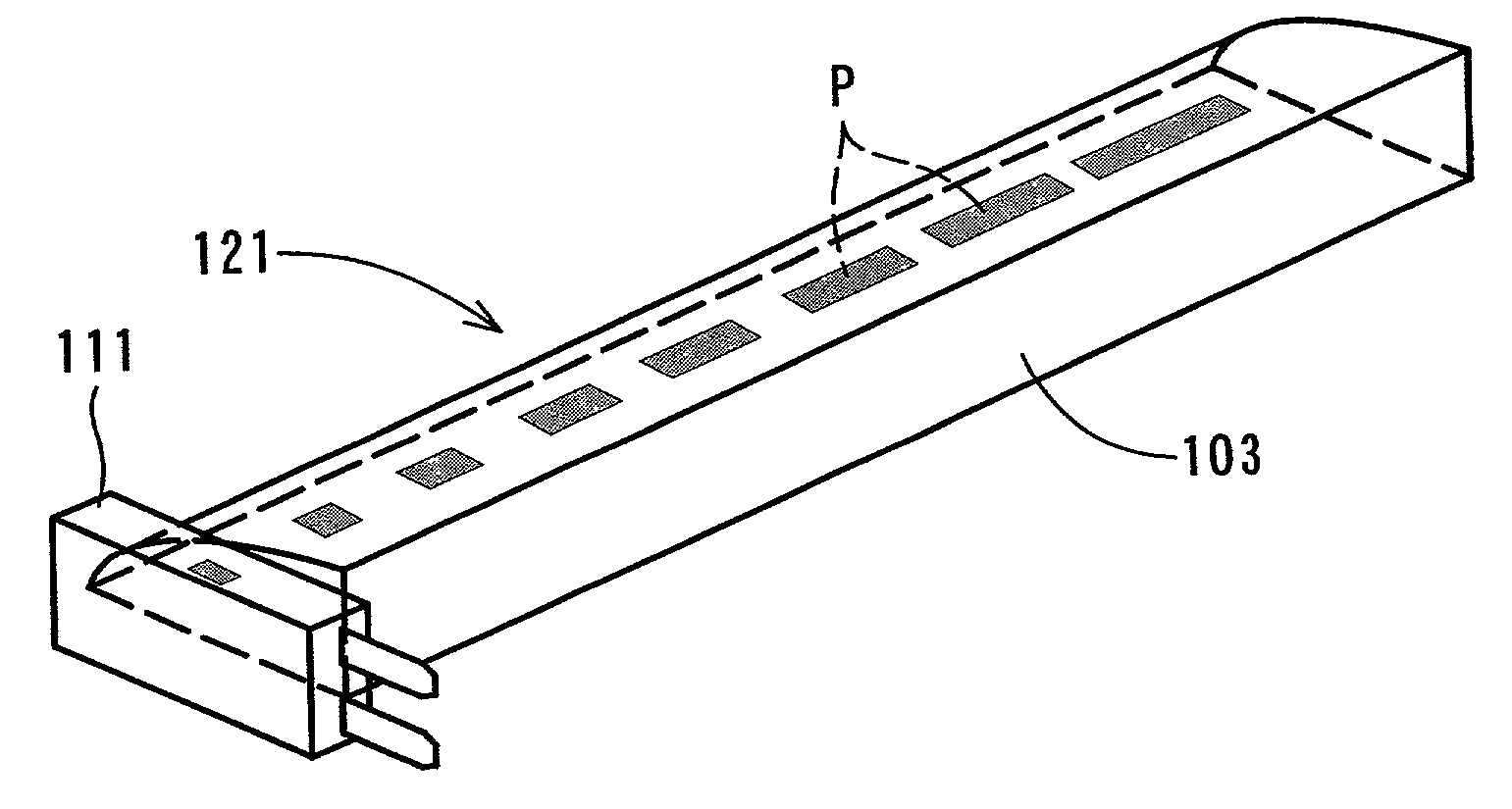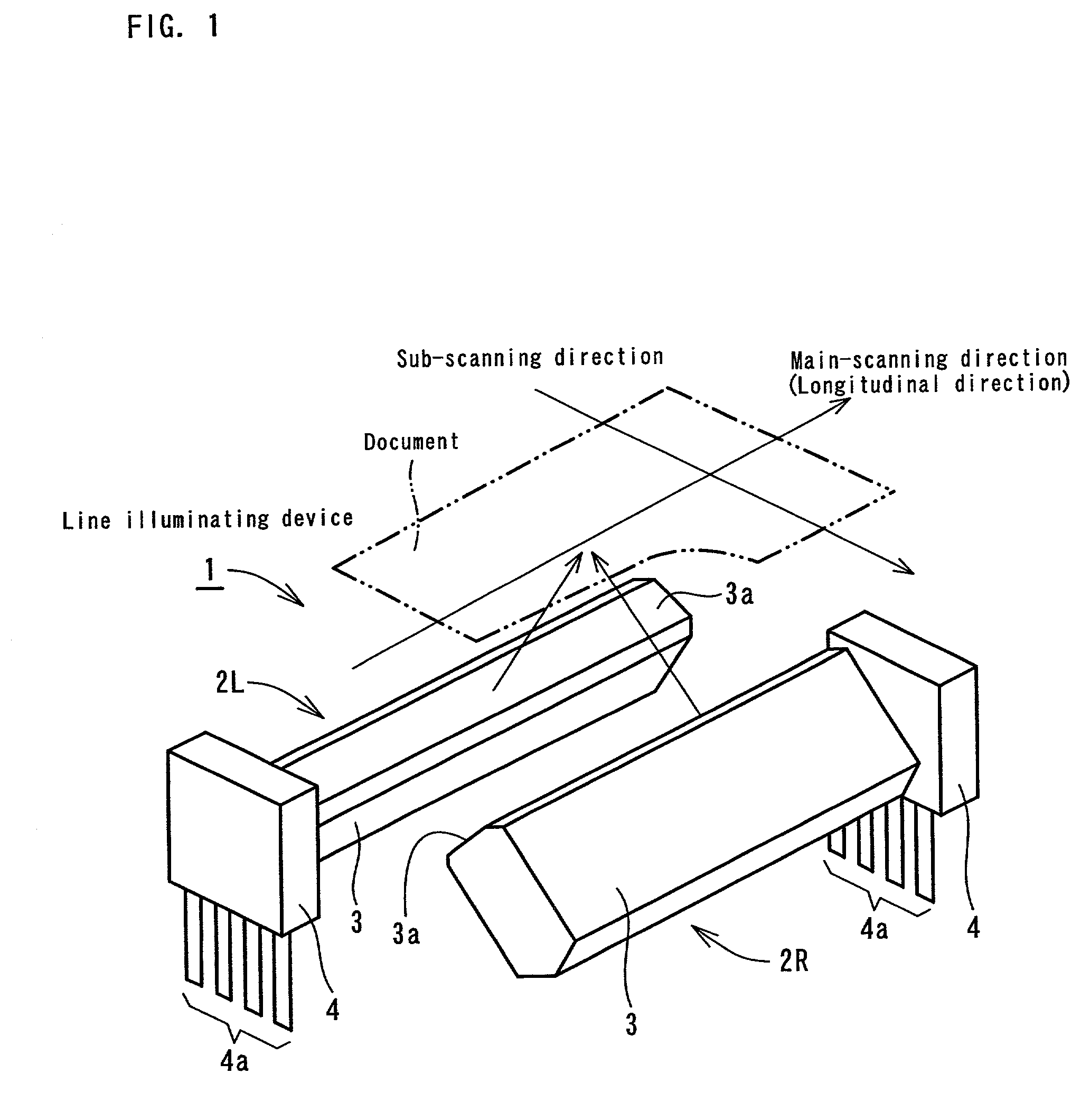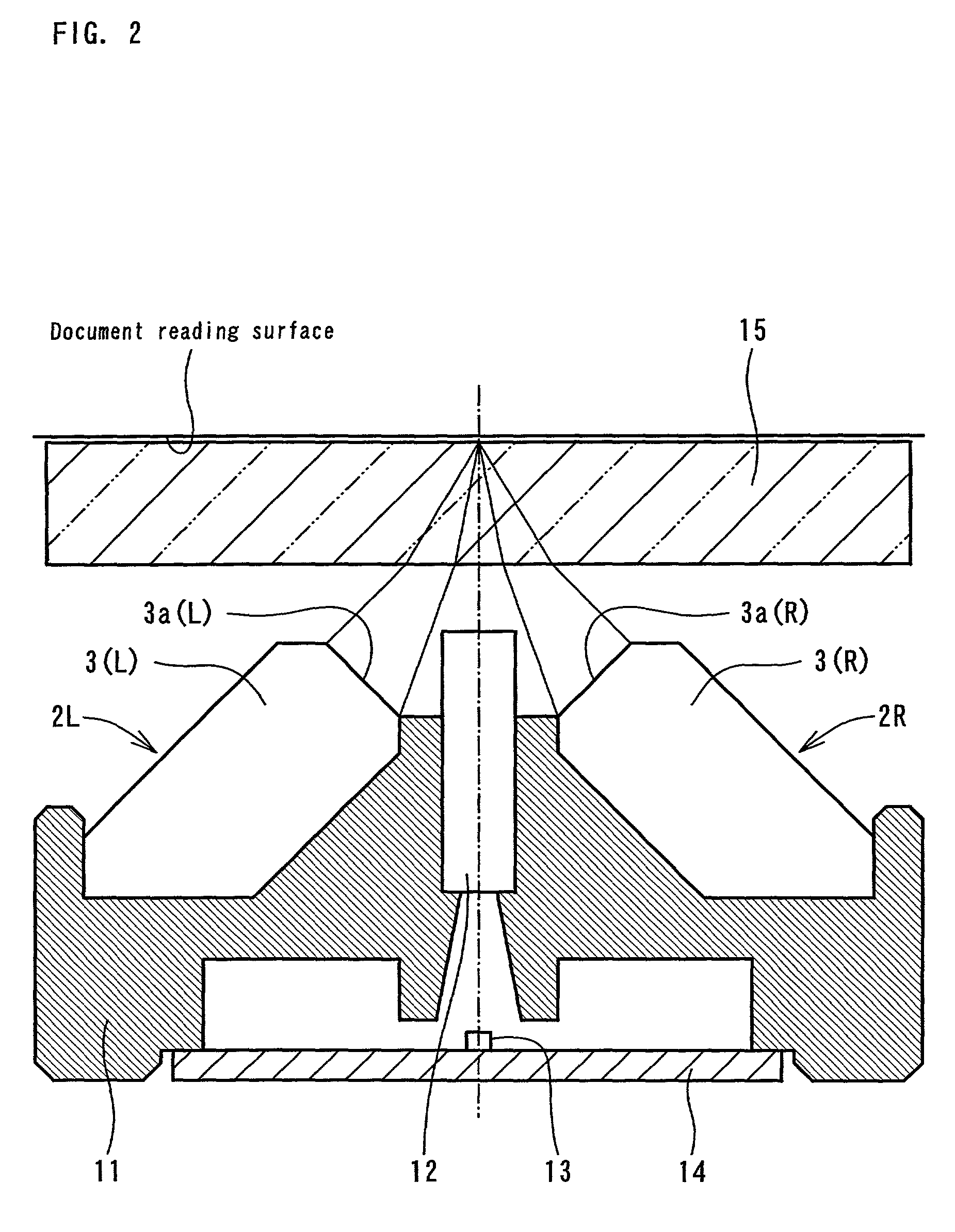Line illuminating device
a technology of illuminating light and line, which is applied in the direction of solid-state devices, instruments, material analysis, etc., can solve the problems of uneven reading image, limit to providing uniform distribution of light intensity of illuminating light, etc., and achieve the effect of clear reading
- Summary
- Abstract
- Description
- Claims
- Application Information
AI Technical Summary
Benefits of technology
Problems solved by technology
Method used
Image
Examples
first embodiment
[0070]FIG. 1 is a perspective view showing a line illuminating device according to the present invention. As show in FIG. 1, the line illuminating device 1 has two illuminating units 2L and 2R alternately arranged. Each illuminating unit 2L and 2R has a light-emitting source base plate 4 attached to one end of a light guide 3.
[0071]The light guide 3 is made of a resin with high light-transmission properties such as acryl and polycarbonate or an optical glass with high light-transmission properties. The cross-sectional shape of the light guide 3 is polygonal and one side is adapted to serve as an emission plane 3a. Light-scattering patterns (not shown) are formed on the surface opposite to the emission plane 3a.
[0072]The light-emitting source base plate 4 is provided with one or a plurality of surface mounting type light-emitting diodes (LED) as a light-emitting source (not shown) and light from these light-emitting diodes is incident from an end surface of the light guide 3. Refere...
second embodiment
[0084]FIG. 5 is a cross-sectional view of a document-reading device incorporating a line illuminating device (the line illuminating device ) provided with two illuminating units with a casing. The document-reading device as shown in FIG. 5 comprises a frame 31 provided with two illuminating units 20L and 20R and a rod lens array 42, and a base plate 35 provided with a photoelectric conversion element (an image sensor) 34 mounted on the lower opening portion of the frame 31. Reference numeral 36 is a glass plate for a document stand and reference numeral 37 is a manuscript.
[0085]Each illuminating unit 20L and 20R comprises a light guide 21, a white casing 22 for covering the light guide 21, and a light-emitting source base plate provided with a light-emitting source (not shown). Reference numeral 21a is an emission plane and reference numeral 21b designates light-scattering patterns. The structure of each illuminating unit 20L and 20R is the same as that of the conventional illuminat...
third embodiment
[0092]In the line illuminating device two light guides 41 (illuminating units) are, as shown in FIG. 6(b), closely connected to each other and housed in a casing 42B. Also, as shown in FIG. 6(c), each light guide 41 (illuminating unit) may be integrally housed in its own housing portion formed in the casing 42C. The light guide 41 as shown in FIG. 6(c) is arranged so that the plane serving as the emission plane 41a does not coincide with the minor axis of the oval, but is positioned at a specific angle to the minor axis to shift the focus position.
[0093]FIG. 8 is a cross-sectional view of a line illuminating device according to a fourth embodiment and FIG. 9 is a cross-sectional view of a line illuminating device according to a fifth embodiment. FIG. 8(a) shows the cross-sectional structure of a single illuminating unit and FIGS. 8(b) and (c) show the cross-sectional structure of the line illuminating device according to the present invention. Similarly, FIG. 9(a) shows the cross-s...
PUM
 Login to View More
Login to View More Abstract
Description
Claims
Application Information
 Login to View More
Login to View More - R&D
- Intellectual Property
- Life Sciences
- Materials
- Tech Scout
- Unparalleled Data Quality
- Higher Quality Content
- 60% Fewer Hallucinations
Browse by: Latest US Patents, China's latest patents, Technical Efficacy Thesaurus, Application Domain, Technology Topic, Popular Technical Reports.
© 2025 PatSnap. All rights reserved.Legal|Privacy policy|Modern Slavery Act Transparency Statement|Sitemap|About US| Contact US: help@patsnap.com



